Exploration geologist Jon North was attending Mille Miglia – the annual re-enactment of the classic car race from Brescia in the foothills of the Italian Alps to Rome and back – when he met Oscar Louzada.
Louzada, a Dutch mining investor who had worked in Canaccord Genuity’s London office for several years, bonded with North over their mutual appreciation for “sexy European cars” and the two attended the event as part of a larger group of friends from Holland, Switzerland and Italy for many years.
“I grew up in Windsor so I have gasoline in my veins,” jokes North, who drives a 2007 Ducati S2R 100 and a 2015 Ducati MS 1200, noting that the motorcycles give him “street cred” with his Italian friends.
But North and Louzada had more in common than spring vacations in Italy and vintage car rallies. Louzada had started looking for gold deposits in Suriname and started a company with a group of friends – picking up the Nassau project – a 200 sq. km property adjacent to Newmont’s (TSX: NGT; NYSE: NEM) Merian mine and about 50 km from Iamgold’s (TSX: IMG) Rosebel mine.
“Oscar had been bugging me to go to Suriname for years,” North recalls, “but I said, ‘I’m too busy, I’m drilling off an ore deposit.’”
At the time, the company he had founded, Northquest, was advancing the Pistol Bay project on the west coast of Hudson Bay in eastern Nunavut, 80 km south of Agnico Eagle Mines’ (TSX: AEM; NYSE: AEM) Meliadine mine.
Inco Gold had discovered the property in the 1980s, and when North acquired it in 2010, he hired out of retirement Inco Gold’s former geologist, Dwayne Carr, to manage Northquest’s exploration program.
“Inco’s diamond drill hole in the 1980s was something like 120 metres at 2.5 parts per million (ppm) gold, and the property sat there open for staking for 25 years, even though it was across the bay from Meliadine,” North says. “It was Dwayne’s favourite project of his entire career at Inco, and our first drill hole there intersected something like 150 metres of 5 ppm gold. The stock traded from 10¢ to $1.00 in a single session.”
The timing didn’t work in Northquest’s favor, however.
“It was 2012 and the beginning of the market from hell, and even with results like that I couldn’t raise any money. That’s when I realized that the market was the most powerful force in the universe,” North says.
Ultimately, Northquest completed an inferred resource on Pistol Bay’s Vickers zone of 7.79 million tonnes averaging 2.95 grams gold per tonne for 739,000 contained oz. in April 2016. The company was then acquired later the same year by its majority shareholder, Russian gold major Nordgold, in a deal valued at $28 million.
“When we were taken over by Nordgold Oscar called and said, ‘Now that you’ve got time, come down and look at what we’ve got in Suriname,” North says. “This was an easy thing for me to do because I had been working in the West African shield for ten years prior to Pistol Bay and completely understood the Birimian rocks in West Africa as being exactly the same rocks as in the Guiana Shield.”
North flew down to Suriname’s capital, Paramaribo, rented a helicopter, and flew over the jungle to survey the area.
In the space of about ten minutes, the aircraft whisked North over the Rosebel and Merian mines and Louzada’s projects. “There were thousands of people in the jungle with excavators, pumps and sluices everywhere mining gold,” North remembers. “There were people everywhere.”
“It’s a small country, but it’s captured one of these super-endowed regions, so any real estate in there is good,” he continues. “If you just drew a circle around Rosebel and Merian and called anything in that circle a gold environment, there are probably going to be another 20 million or maybe 30 million oz. found inside that circle.”
What’s more, you don’t have to be a “geological genius” to find a deposit there, he says, you just have to follow the artisanal miners – find out where they’re working and dig through the gravels and into the saprolite and then drill below it.
Louzada’s company, Sumin N.V., could never raise enough money and more or less went bankrupt, North says. “When I looked at the situation, I completely agreed with them that Suriname needed a premier gold explorer, so we took them over.”
North acquired Louzada’s company in 2017 and with it 70% of the Nassau project (with an option to own 80%) in an all-share deal valued at about $712,000. He also inherited Sumin N.V.’s 27% stake in the Sandpiper concession, 30 km away.

79North’s Nassau project in Suriname. Credit: 79North.
North’s company, 79North (CNSX: TWLV), which listed in mid-June in a reverse takeover of a shell called 12 Exploration, plans to become the first junior exploration company active in the prospective South American country.
The Nassau concession hosts two vast placer gold deposits and a smaller one, and they all surround a topographic feature called the Nassau plateau, North says. “The only conclusion you can arrive at is that the plateau is the source of the gold in the placers because it’s the high point.”
Mariana Resources spent about $1.5 million on exploration on the project when it was owned by Sumin N.V., he adds, before it was taken over by Sandstorm. “They did some very good science out there and they recognized the plateau area was the source as well and did a bunch of auger holes and a number of them intersected gold. We’ve got the core and re-logged it, and it has beautiful alteration.”
Drill hole MNA-12 returned 8 metres of 1.34 ppm gold and MNA-31 intersected 1 metre of 1.79 ppm, he says, adding that the drill campaign “defined a volcanic-sediment boundary and that boundary is where the gold is at Rosebel.”
“We would have done a completely different method of analysis on the auger core, but these are someone else’s results, and that’s what we have to work from.”
For North, Suriname’s Birimian rocks remind him of West Africa, where he spent ten years and where his company, North Atlantic Resources, discovered the FT gold deposit in Mali. The Guiana and West African Shields were adjacent prior to the breakup of the supercontinent Pangea, he explains.
But operating in Suriname, a country with a population of 500,000 and an area of just 163,270 sq. km, is a easy compared with Africa, says North, who has worked in Burkina Faso, Cameroon, Chad, Guinea, Ivory Coast, Mali, Niger, Tanzania, Zambia and Zimbabwe.
“Everything works there,” he says of the former Dutch colony bordering the Atlantic Ocean between French Guiana and Guyana. “There is no malaria in the capital. No Al Qaeda. No kidnapping. Nobody molests you, and it’s perfectly safe.”
North plans to put the $4 million in 79North’s treasury to work once the airport reopens, after being shut down due to the coronavirus pandemic.
The first order of business will be to hire an aircraft and complete a LiDAR survey and geological and geochemical surveying. Diamond drilling should start within a year, he says, and the company is on the brink of announcing its first major acquisition.
“We have a big strategy for new acquisitions, and we are doing due diligence on half a dozen new projects now,” North says.
“You’ve got to go where the opportunities are, and when we tried to name one junior company working in Suriname we couldn’t think of one, so we said, ‘Let’s be that one.’”

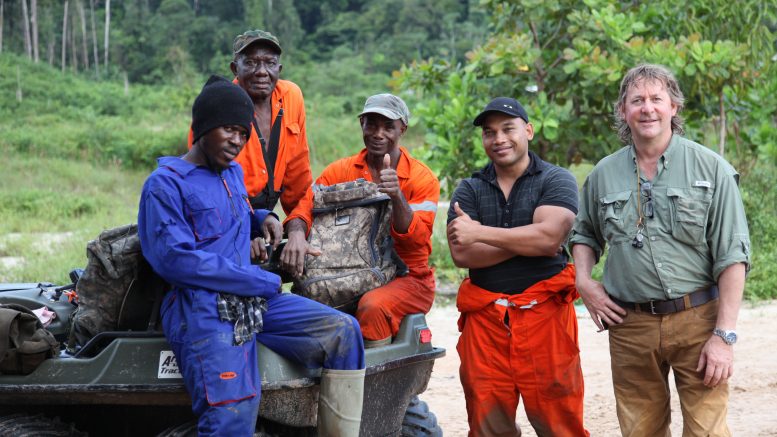
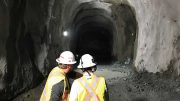
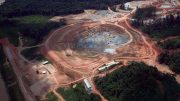
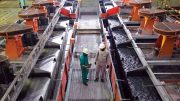
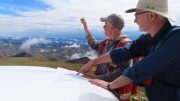
Be the first to comment on "79North taps into Suriname’s Guiana Shield"